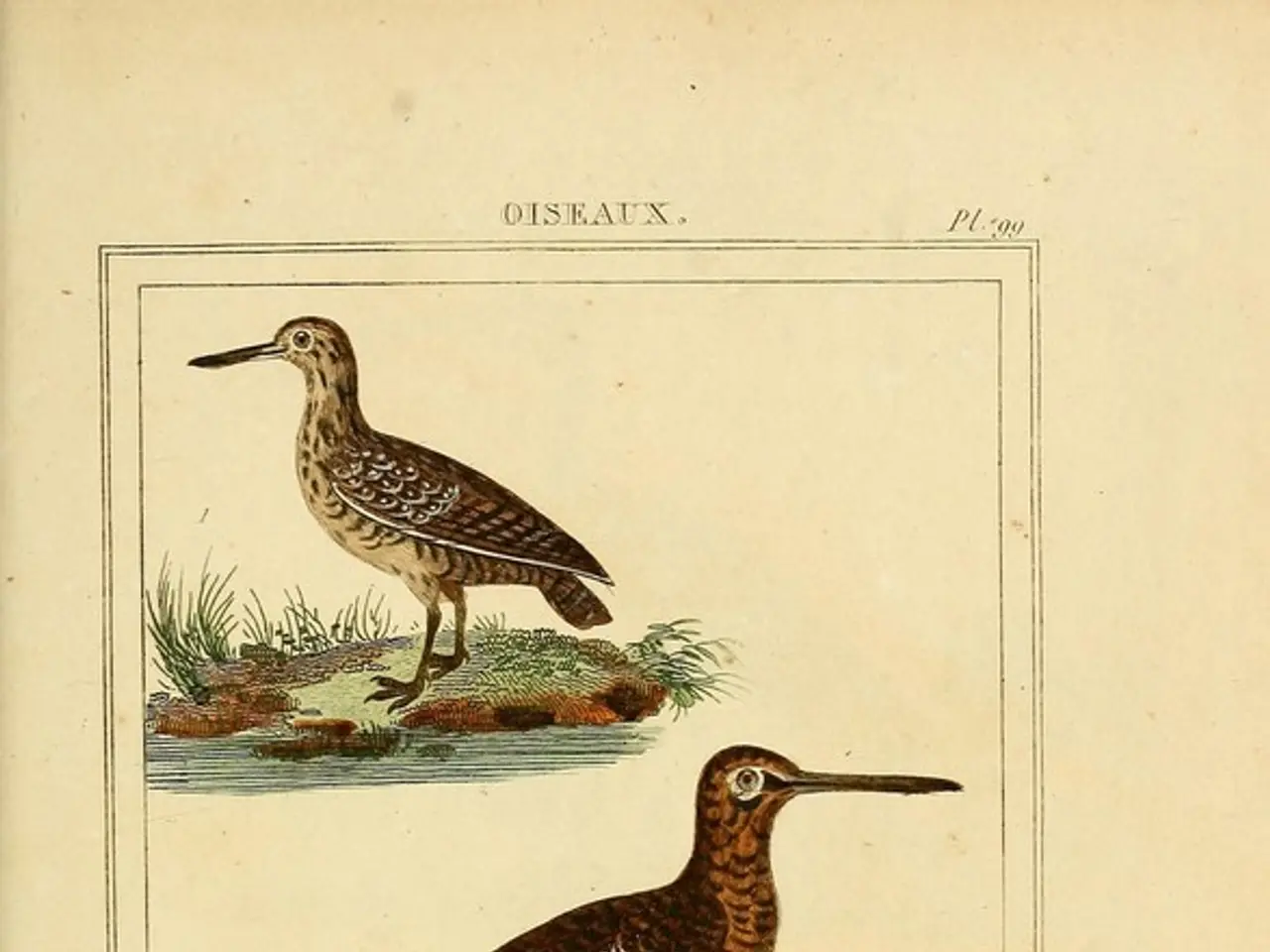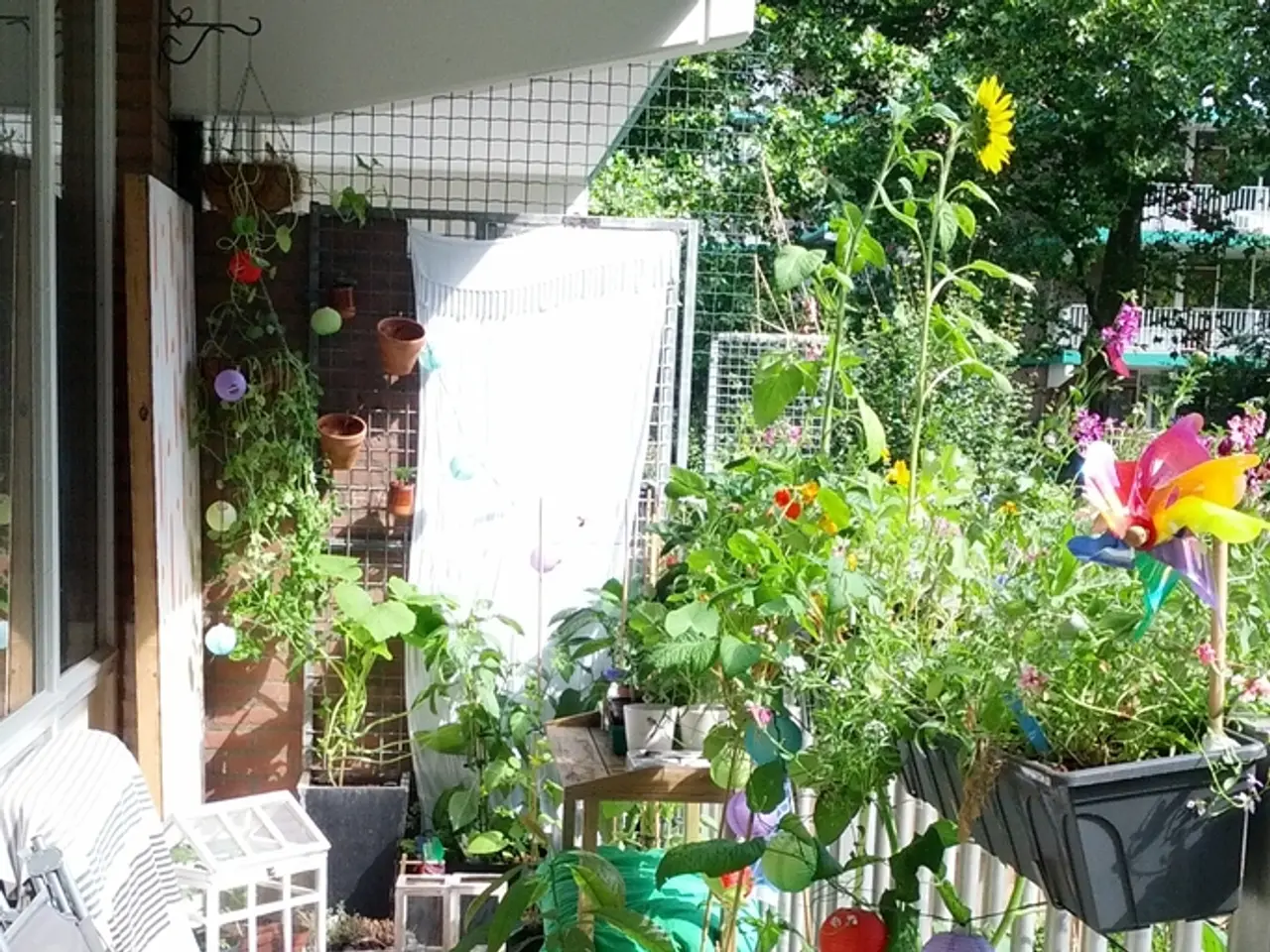Strategies to Encourage Hummingbird Visits: Top 5 Bed and Pot Blends
In recent years, suburban gardens have become increasingly important for providing food and shelter for hummingbirds. As urban development expands and fewer forest edges and meadows are available, these tiny winged creatures are finding solace in our backyards.
A garden designed with hummingbirds in mind can help sustain these fascinating creatures. Here are some plants suitable for hummingbird gardens in USDA Hardiness Zones 5-8.
Flame Azalea (Rhododendron calendulaceum) is a deciduous shrub growing 4-15 feet tall. Its bright orange to salmon flower heads in spring make it a stunning addition to any garden. It thrives in zones 5-7, prefers moist, well-drained soil, and partial shade to full sun. Its funnel-shaped flowers attract hummingbirds.
Honeysuckles are hardy in zones 5-9 and are beloved by both hummingbirds and pollinators. They do well in partial shade but tolerate full sun, making them adaptable and low-maintenance for these zones.
Other perennials with funnel-shaped flowers are excellent for hummingbird attraction. Many perennials suitable for zones 5-8 have these flowers and thrive in half-shade and partial sun conditions, supporting hummingbird activity, particularly those that bloom in late summer.
Kniphofia uvaria (Red Hot Poker) is a perennial with tall spikes of red, orange, and yellow-tipped tubular flowers that shine in a dry landscape. It is hardy in USDA Zones 5-9.
Agastache spp. (Hummingbird Mint) is a drought-tolerant plant with nectar-filled flowers that attract hummingbirds. It is hardy in USDA Zones 3-10.
In warm, arid environments, drought-tolerant plants like these are beloved by hummingbirds. Aloe spp., for example, produces 2-4ft tall spikes tipped with orange, red, and yellow tubular flowers. They often repeat their blooms throughout the growing season, offering hummingbirds a double dose of nectar.
Hesperaloe parviflora (Yucca) is a waterwise desert plant with tall spikes that flower for weeks at a time and are eagerly visited by hummingbirds. It is hardy in USDA Zones 5-9.
Spring-flowering plants such as Flowering Quince, Bleeding Heart, Garden Phlox, Azalea, and Lungwort are attractive to hummingbirds. Summer-flowering annuals like Petunias, Pentas, Scarlet Salvia, Spider Flower, and Flowering Tobacco are full of blooms and loved by hummingbirds.
Fuchsia spp. has brightly colored pendulous flowers that dangle downward like earrings, providing easy access to plentiful nectar for hummingbirds. It is hardy in USDA Zones 6-7.
Pelargonium spp. (Geranium) has vivid red flowers that lure in hummingbirds, but it's best to pair it with flowers with lots of nectar. It is hardy in USDA Zones 9-11.
Tropaeolum majus (Nasturtium) is attractive to hummingbirds with its yellow and orange flowers that cascade downward for 3ft or more. It is hardy in USDA Zones 9-11.
Penstemon digitalis (Beardtongue) has tall flower spikes loaded with tubular flowers that are attractive to hummingbirds. Once established, it is drought tolerant and needs very little care. It is hardy in USDA Zones 3-9.
Mandevilla hybrids can be used as a "thriller" plant in a container's center, attracting hummingbirds with its large-flowered tropical vines. It is hardy in USDA Zones 9-11.
When planting for hummingbirds, consider the USDA Hardiness Zone and soil type, light levels, and moisture conditions. By choosing the right plants and providing the right conditions, you can create a beautiful garden that is a haven for these fascinating creatures.
Incorporating drought-tolerant plants into your home-and-garden lifestyle is beneficial for both your plants and hummingbirds. For instance, during summer months, Aloe spp., with its orange, red, and yellow blooms, offers nectar-rich flowers to hummingbirds in arid environments.
To create a thriving hummingbird garden, consider including perennials like Agastache spp. (Hummingbird Mint), known for its nectar-filled flowers that attract these tiny winged creatures, in your gardening repertoire.




